Electric Keyboards Guide
Number of keys
The number of keys usually ranges from 25 to 88, with 88 being the traditional number found on acoustic pianos. If you are a beginner or have limited space, a keyboard with 25 to 49 keys, such as the Korg MicroKEY2 Air-25 or the Akai MPK Mini MKII, may be suitable. These compact keyboards are portable and perfect for learning and creating music on the go. For intermediate players or those seeking a wider range of tones, 61 to 76 key keyboards like the Yamaha PSR-EW300 or the Casio CT-X700 provide more room for expression. Lastly, for advanced pianists or professional musicians looking for a close approximation to the traditional piano feel, an 88-key keyboard is necessary, such as the Yamaha P-125 or the Kawai ES110. These keyboards often come with weighted or hammer-action keys to simulate the true touch of an acoustic piano.
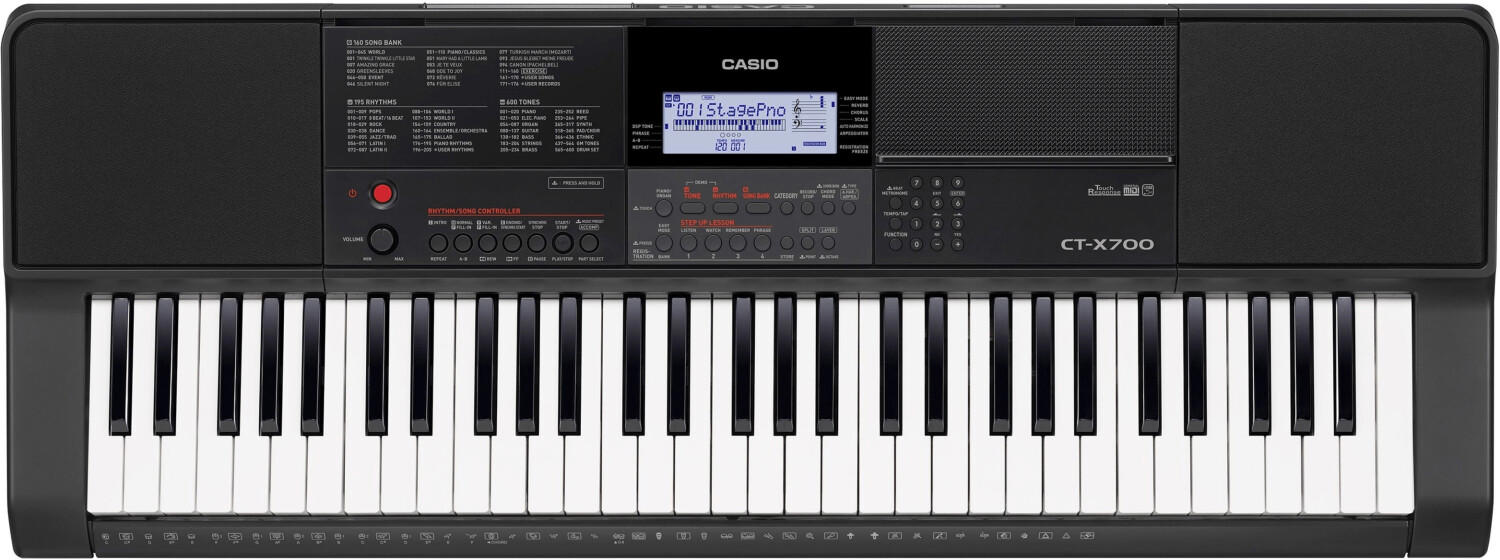

Key sensitivity
Key sensitivity refers to the responsiveness of the keys when they are played. This feature allows for dynamic control and better expression while playing. For beginners or casual players, keyboards with non-weighted or semi-weighted keys, such as the Yamaha PSR-E363 or the Casio CTK-3500, can be considered. These keyboards offer lighter touch and are more affordable. On the other hand, more advanced players or those looking for a piano-like experience may prefer keyboards with fully-weighted keys. In this category, the Yamaha P-45 and the Korg B1SP are great options that provide a similar feel to an acoustic piano, with features like graded hammer action (providing a heavier touch in the lower register and a lighter touch in the higher register).
Weighted or semi-weighted keys
Weighted keys simulate the feel and response of an acoustic piano, where the keys are weighted and require more pressure to play. This provides a more realistic playing experience, making it an excellent choice for pianists or those aspiring to learn classical piano. Some top-notch options in this category include the Yamaha P-515, which features Natural Wood X (NWX) weighted keys and synthetic ebony and ivory keytops for an authentic touch and feel. Another impressive model to consider is the Kawai ES110, which boasts Responsive Hammer Compact (RHC) action, pro-grade piano samples, and a polyphony of 192 notes, making it suitable for both beginners and advanced players.
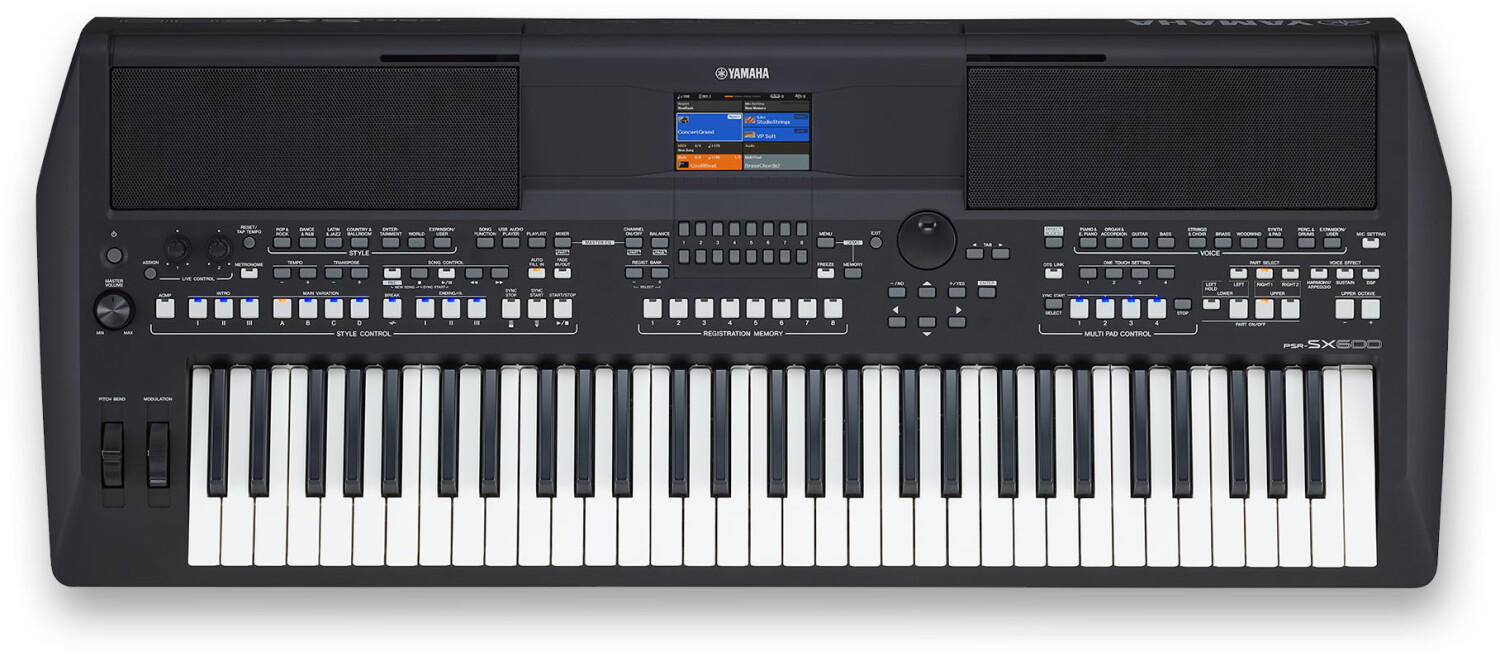
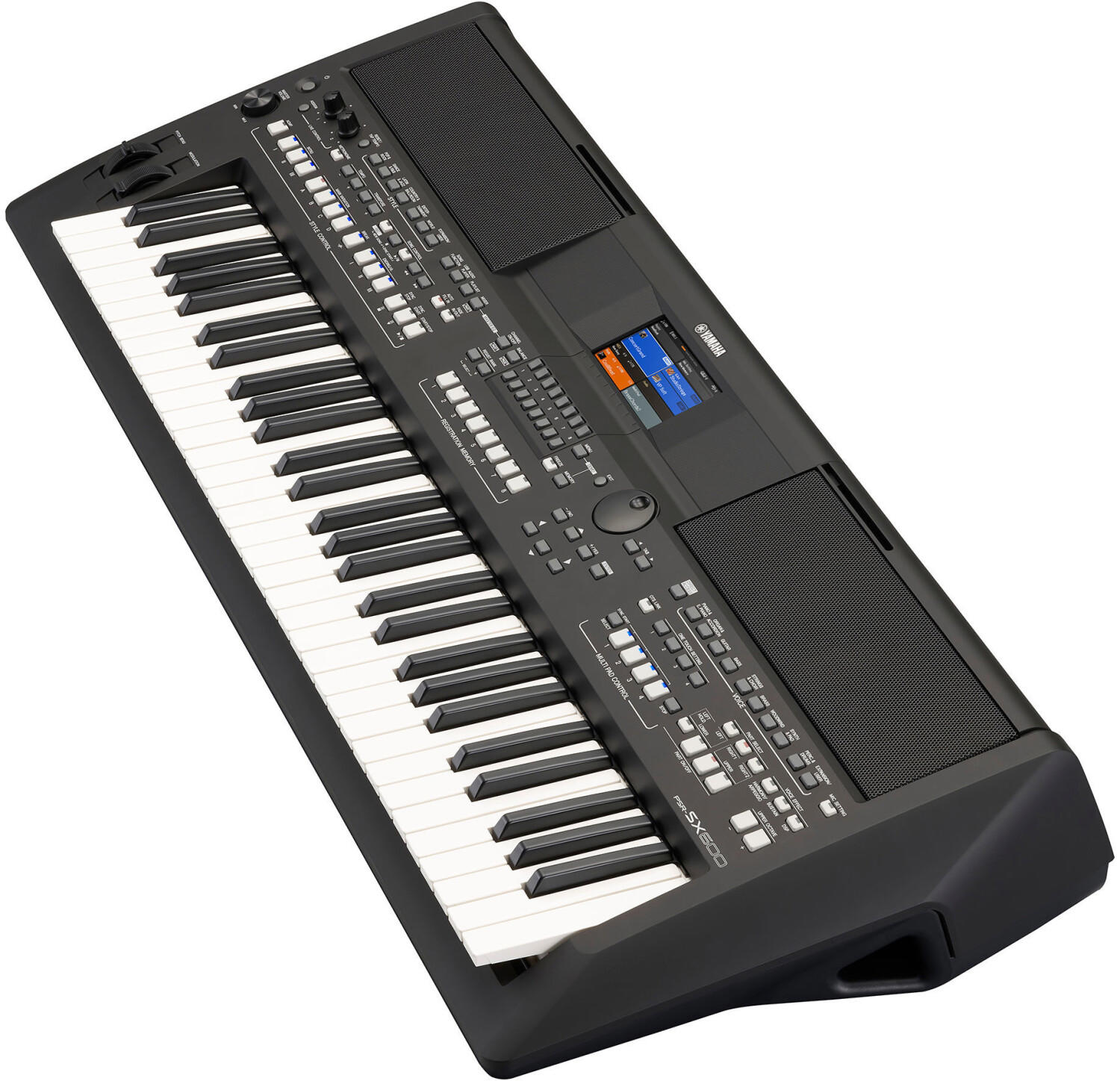
Touch response
It refers to how the keys on the keyboard respond to your playing style and how expressive you can be with your playing. Keyboards with adjustable touch response allow you to control the level of sensitivity, offering a dynamic and nuanced playing experience. The Yamaha DGX-660 is an excellent example of a keyboard with touch-sensitive keys. It features the highly acclaimed Yamaha Graded Hammer Standard (GHS) Keyboard, which emulates the authentic feel of an acoustic piano, responsive to the pressure applied while maintaining a natural touch. Another notable option is the Roland FP-30. It utilizes the Roland's renowned PHA-4 Standard keyboard, which features progressive hammer action with escapement feel, allowing precise control and natural response.
Sound quality
The quality of sound produced by the keyboard can greatly impact your music playing experience. To ensure crystal-clear and realistic sound, consider keyboards with advanced features such as sampling technology, multiple tones, and adjustable touch sensitivity. One exceptional keyboard in terms of sound quality is the Yamaha P-125 equipped with Pure CF Sound Engine, which reproduces the sounds of Yamaha concert grand pianos with great precision. Another top choice is the Casio Privia PX-870, boasting Casio's AiR (Acoustic and Intelligent Resonator) Sound Source, providing dynamic and nuanced sound reproduction. If you desire a keyboard that replicates the experience of playing an acoustic piano, consider the Kawai ES110 with its Harmonic Imaging sound technology that meticulously captures the unique tonal characteristics of the renowned Kawai EX concert grand piano. These keyboards offer an exceptional sound quality, making them superb choices for both aspiring musicians and experienced players.
Polyphony
Polyphony refers to the number of sounds or notes that the keyboard can play simultaneously. A higher polyphony count allows for more complex and intricate musical compositions. For beginners or those on a budget, keyboards with lower polyphony like the Yamaha PSR-E363 or the Casio CTK-2550 are suitable options. These keyboards offer polyphony counts of 48 and 32 respectively, which is sufficient for learning and basic playing. Intermediate players may find keyboards with a slightly higher polyphony count more suitable, such as the Yamaha P-45 which offers 64 voices or the Casio PX-770 with 128-note polyphony. For professional musicians or advanced players, keyboards like the Yamaha YDP-164 with 192-note polyphony or the Roland F-140R with 128-note polyphony provide greater versatility and performance capabilities.

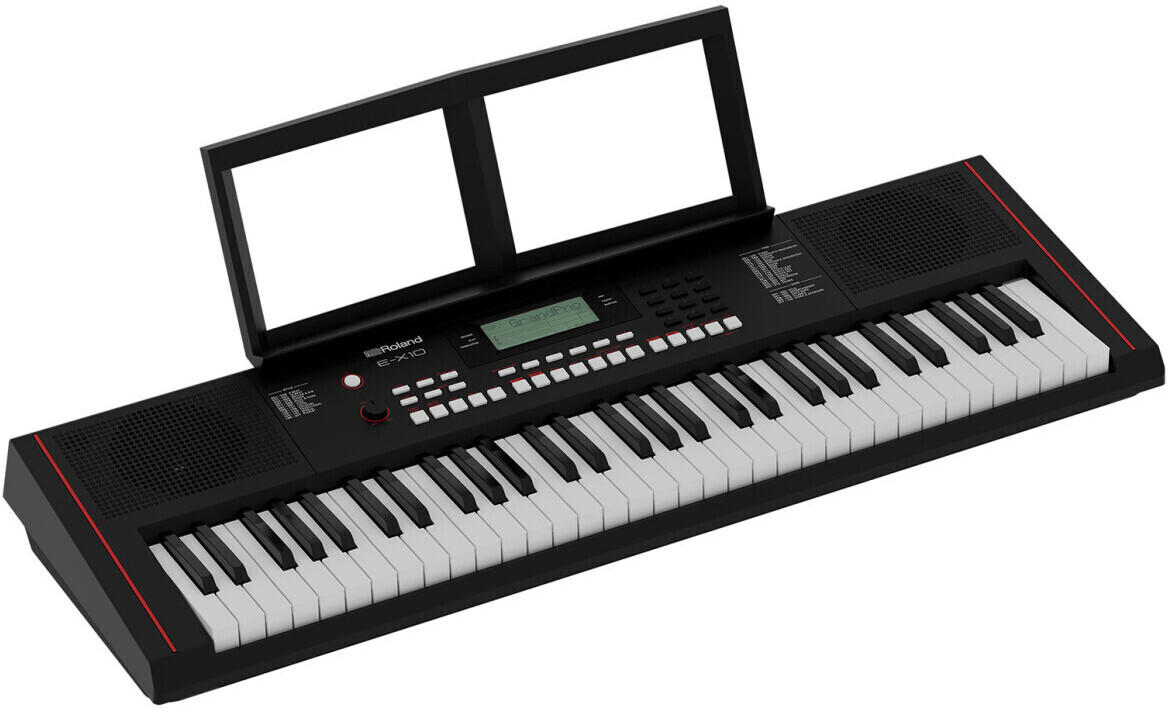
Number of voices
The number of voices refers to the different sounds that the keyboard can produce, allowing for greater versatility in your music. A basic keyboard may offer just a few voices, like piano, organ, and strings. However, higher-end models could have a vast selection of voices, some even simulating other instruments like guitars, cellos, and brass.
If you are looking for a keyboard with a rich variety of voices, the Yamaha YDP-144 is a great option. This digital piano offers 10 different voices, including grand piano, electric piano, and strings. Similarly, the Korg PA600 is a professional arranger keyboard with a whopping 950 voices, which ensures endless possibilities for any musician. It includes standard instrument voices, but also ethnic instruments, synth sounds, and drum kits. Lastly, if you're on a tighter budget, the Casio CTK-3500 provides an impressive selection of 400 voices, ranging from acoustic pianos to drums and synthesizers. So, depending on your needs and budget, you can select a keyboard with the desired number of voices that suits your musical style.
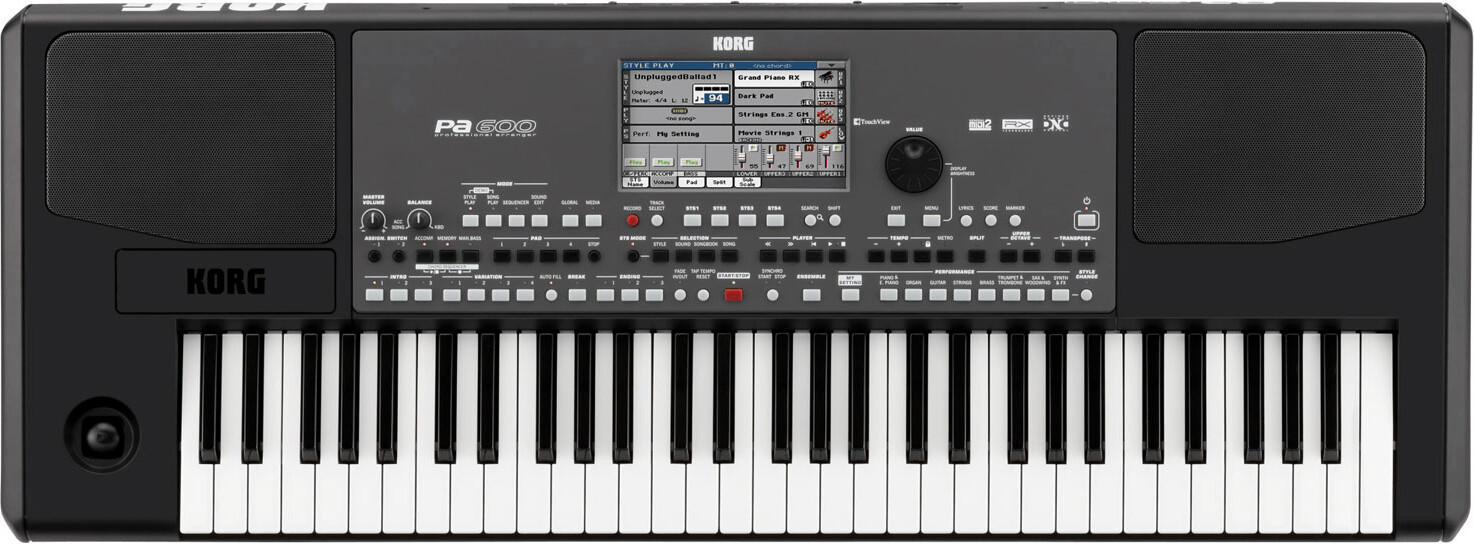

Pianist accompaniment features
This includes features like auto accompaniment, rhythmic patterns, and backing tracks. A great example of a keyboard with impressive pianist accompaniment features is the Yamaha PSR-EW410. This keyboard offers a wide range of accompaniment styles, including jazz, pop, and rock, allowing pianists to play along with different genres of music. Additionally, it has a built-in arpeggio feature that automatically generates sequenced phrases, adding depth and complexity to the accompaniment. Another option to consider is the Casio CT-X700. This keyboard offers 195 built-in accompaniment styles, including world music styles and various patterns like reggae and salsa. It also has a vast selection of backing tracks that can be easily accessed and played along with.
Other electric keyboards on the market can be classified into three groups based on their pianist accompaniment features. The first group includes beginner keyboards that offer a limited number of accompaniment styles and basic rhythmic patterns, such as the Alesis Melody 61 MKII. The second group consists of intermediate keyboards with an expanded range of accompaniment styles and more advanced features, like the Roland Juno-DS. Finally, the third group includes professional-grade keyboards with an extensive library of accompaniment styles, sophisticated rhythm patterns, and backing tracks, such as the Korg Kronos.


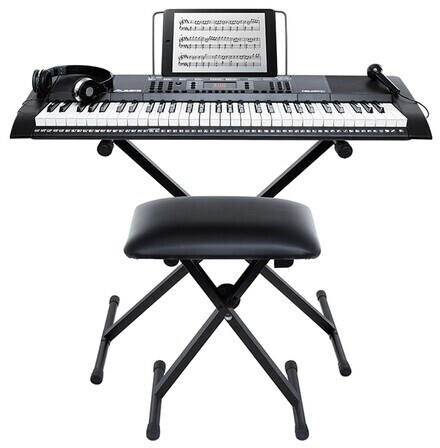
Effects (reverb, chorus, etc.)
Effects can greatly enhance your playing experience and add depth to your sound. Look for keyboards that offer a wide range of effects such as reverb, chorus, and delay. Reverb simulates the natural echo of a room, giving your sound a sense of space. Chorus creates a rich, layered effect by duplicating your sound and slightly detuning it. Delay produces echoes by repeating and delaying the original sound.
A great example of a keyboard with a variety of effects is the Yamaha MX49 II Music Production Synthesizer. It features 11 different types of effects, including various reverbs and choruses. Another option to consider is the Korg Minilogue XD, which offers a high-quality digital effects engine that includes modulation, reverb, and delay. If you're looking for more advanced effects, the Native Instruments Komplete Kontrol S88 MK2 is worth considering as it includes Komplete 12 software and a wide range of virtual effects plugins, allowing you to shape and customize your sound even further.
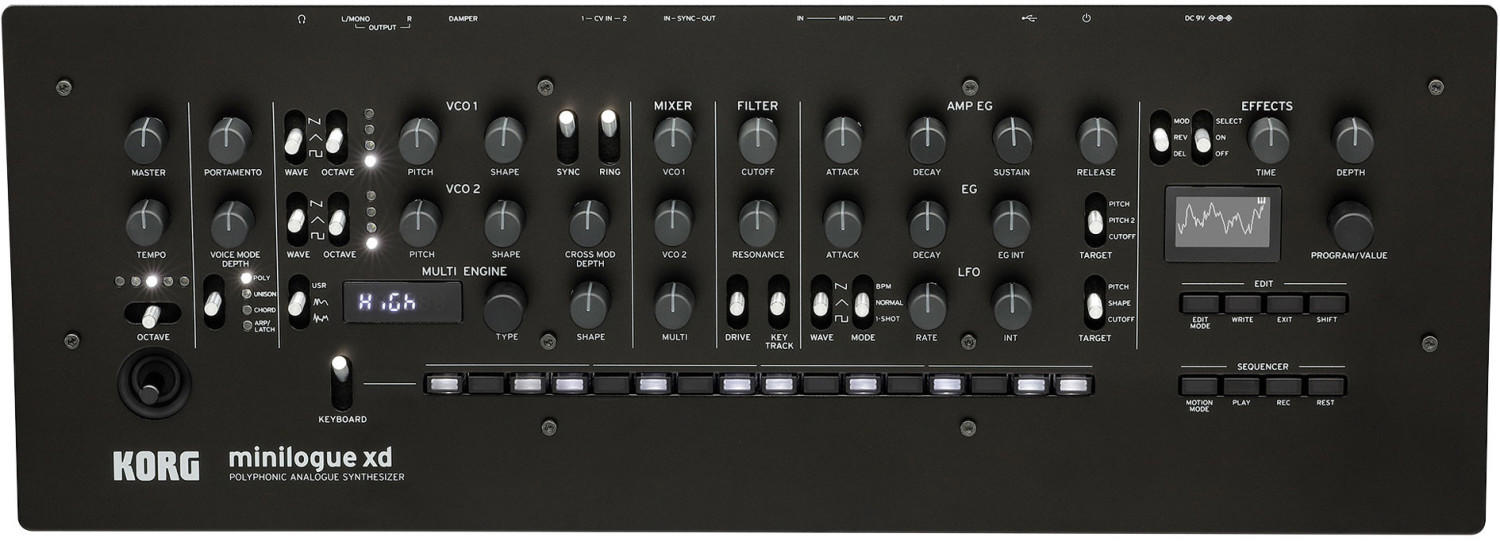
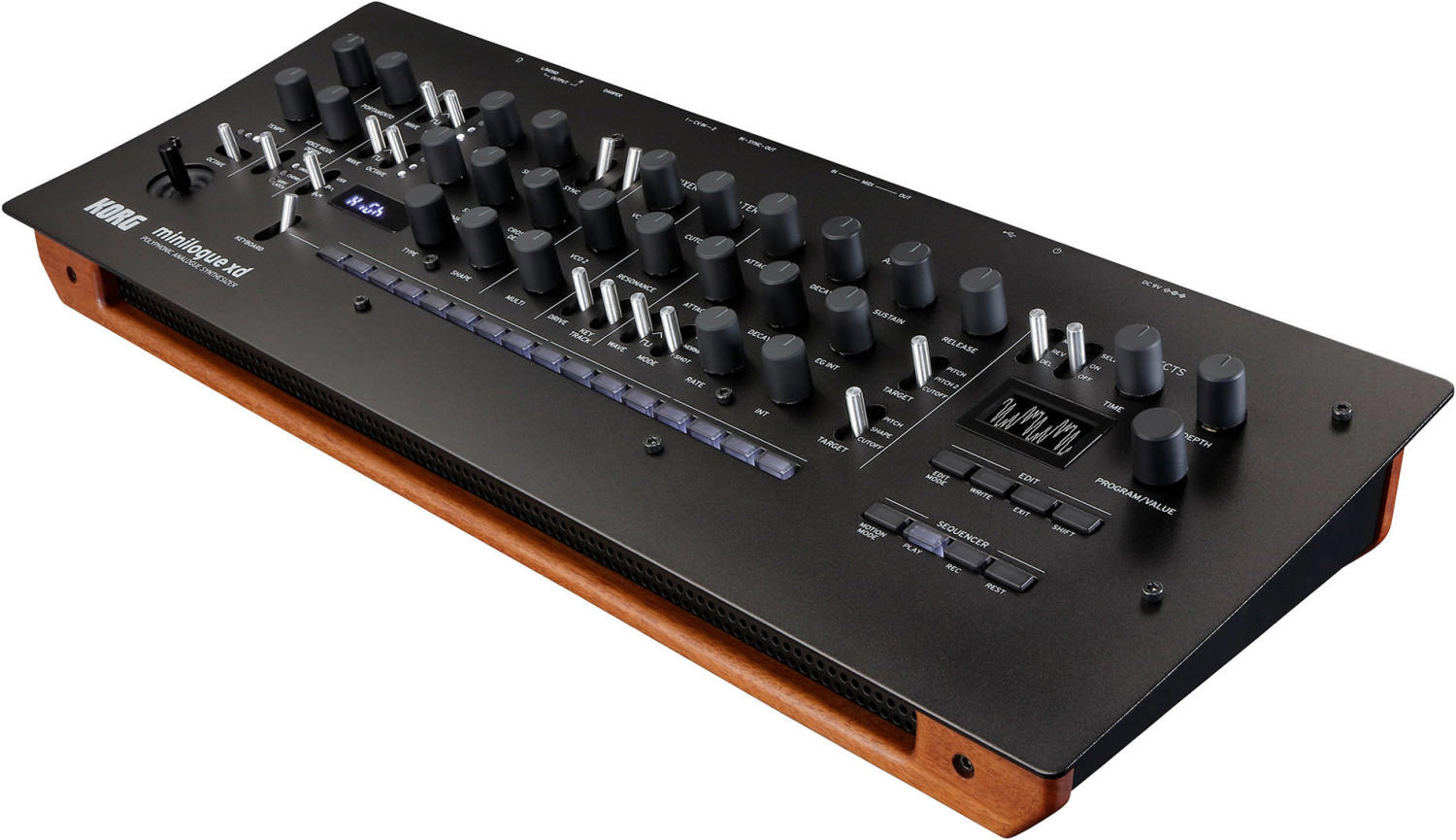
Recording capability
This feature allows you to capture and save your musical ideas, compositions, and performances. Some keyboards come with built-in recording functions, while others may require additional equipment or software for recording purposes. For example, the Yamaha P-45 digital piano offers a simple one-button recording feature, allowing you to easily capture and save your playing. On the other hand, the Casio Privia PX-560 offers a more advanced recording option, allowing you to record up to 100 tracks, with the ability to overdub and edit them. If you are looking for a keyboard with more extensive recording capabilities, the Korg Kronos2 88 workstation would be a great choice, as it allows you to create and save multilayered compositions. Ultimately, the choice of an electric keyboard with recording capability depends on your specific needs and preferences.


Connectivity options (MIDI, USB, audio in/out)
One common type of connectivity is MIDI (Musical Instrument Digital Interface), which allows the keyboard to be connected to a computer or other MIDI-enabled devices. A great keyboard that offers MIDI connectivity is the Yamaha YPG-235. This portable grand piano features a USB-MIDI interface, allowing users to connect to computers and easily control digital audio workstations.
USB connectivity is another important option to consider when choosing an electric keyboard. The Casio PX-770 offers USB connectivity, enabling users to connect the keyboard to a computer, smartphone, or tablet to expand their musical possibilities. This keyboard also features audio in/out options, which allow users to connect external devices such as headphones or speakers for high-quality sound output.
Another option to look for is audio in/out connectivity. The Korg B2 is a great option, offering audio input and output jacks. These jacks allow users to connect external devices such as audio interfaces or audio processors, enhancing their musical opportunities.

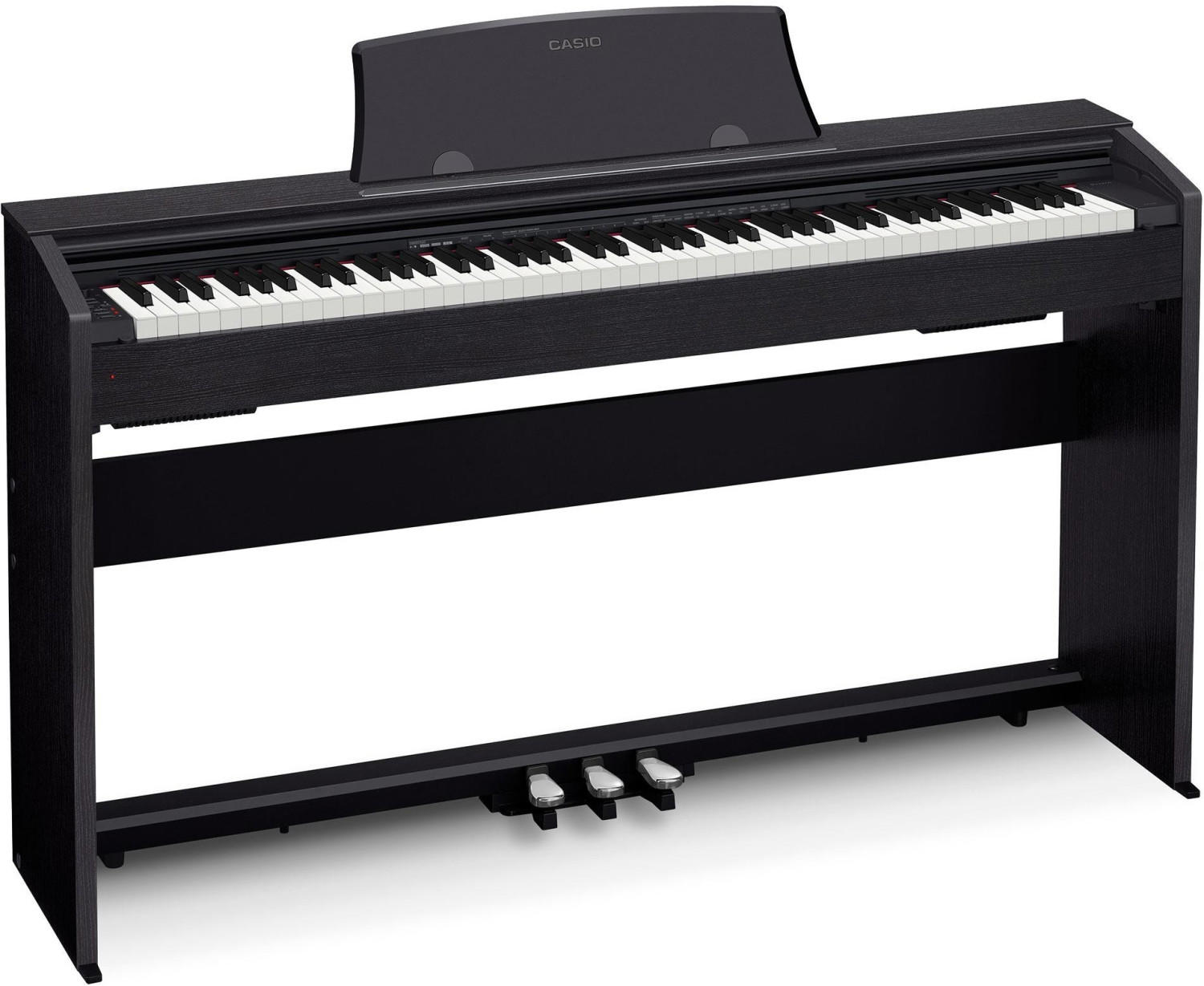
When it comes to connectivity options, the market offers a wide range of electric keyboards. Some keyboards prioritize MIDI connectivity, such as the Roland JUNO-DS88 and the Korg Krome EX. Others focus on USB connections, such as the Yamaha PSR-EW310 and the Casio CTK-3500. Finally, keyboards like the Kawai ES920 and the Kurzweil SP1 prioritize both MIDI and audio in/out connectivity. With such a variety of options, it is important to determine personal preferences and needs in order to choose the best electric keyboard.

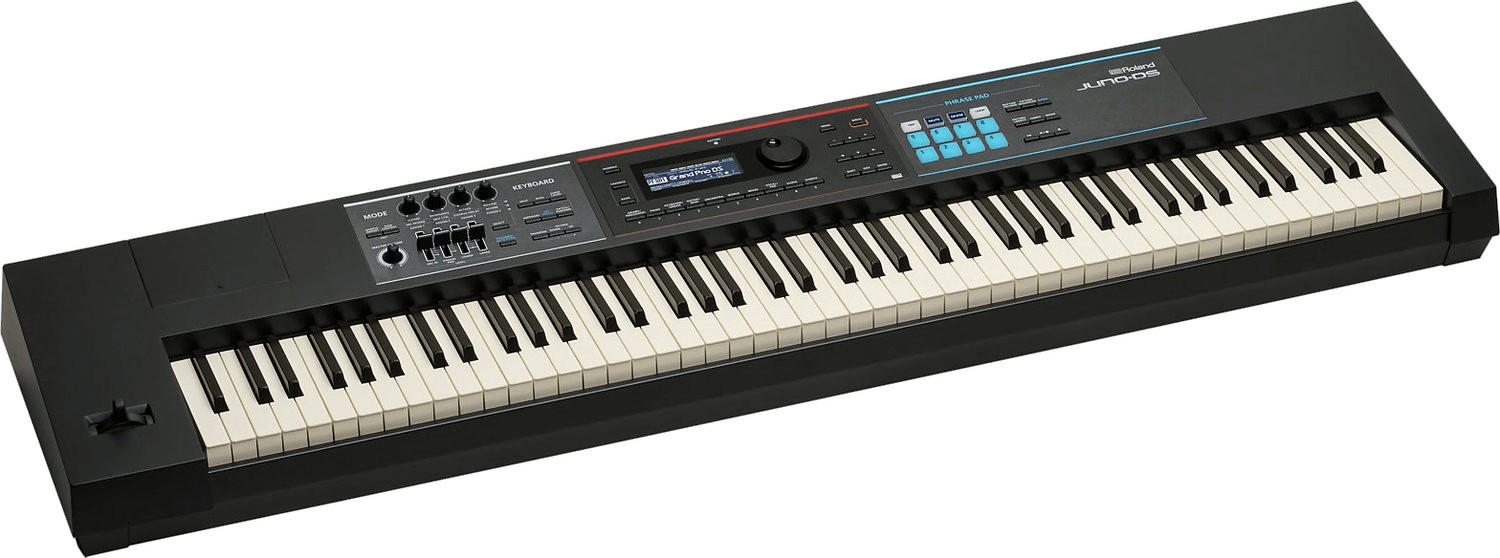


Speaker system
The speaker system determines the quality and amplification of sound produced by the keyboard. Ideally, look for electric keyboards with built-in stereo speaker systems that deliver a clear and balanced output across the entire frequency range. One example of an electric keyboard with a superior speaker system is the Yamaha P-125 Digital Piano. Yamaha is known for its high-quality audio instruments, and the P-125 boasts a built-in stereo speaker system powered by two 7-watt amplifiers, delivering excellent sound projection and depth. Another option is the Casio Privia PX-160 Digital Piano, which comes with a sound projection system that offers an impressive 8 watts of power for an immersive and vibrant sound experience.

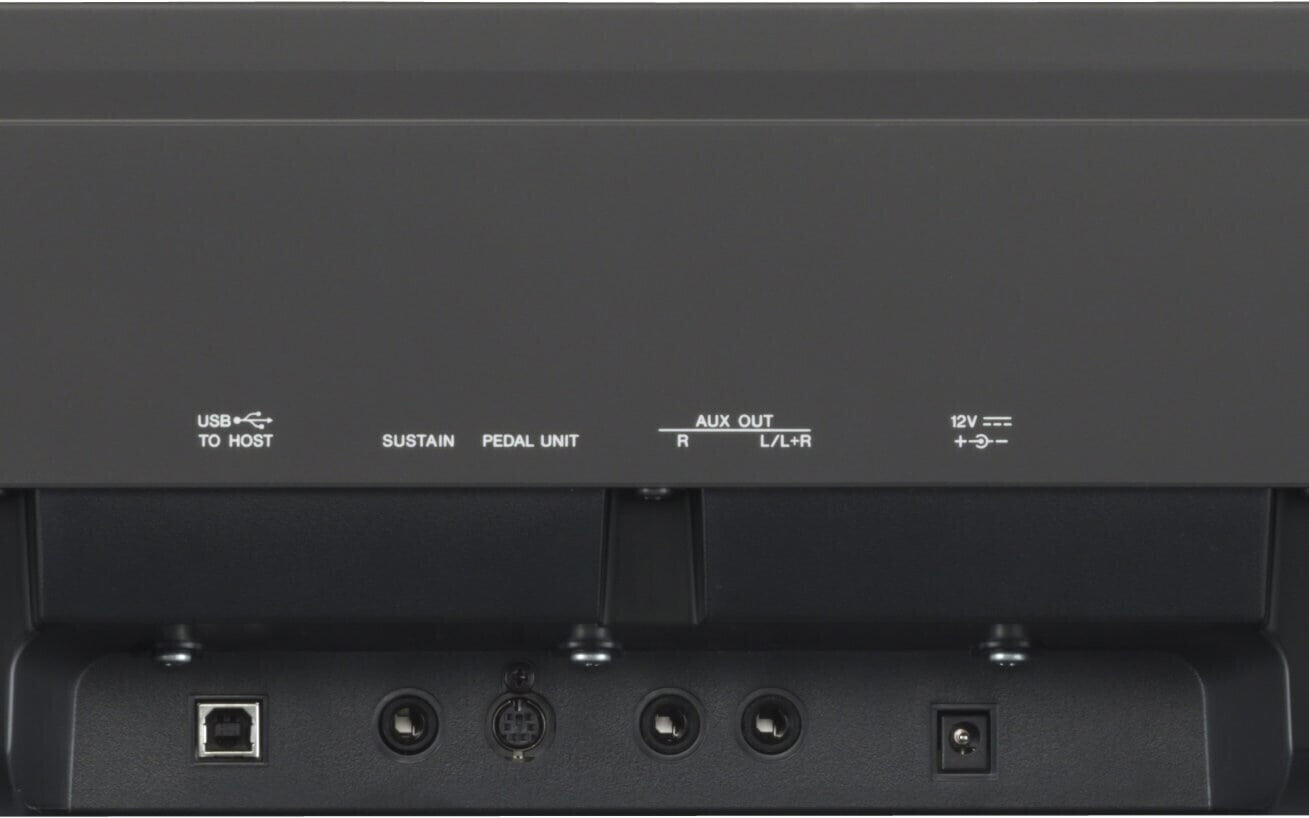

Built-in metronome
A metronome is a device that helps musicians keep time by producing an audible clicking or ticking sound at a specific beat per minute (BPM). This feature is essential for musicians, especially beginners, to develop a sense of rhythm and timing. It allows them to practice and play along with a consistent beat, which enhances their ability to play in sync with other musicians or recordings.
Some recommended electric keyboards with built-in metronomes that are worth considering include the Yamaha PSR-E363, which offers a versatile range of sounds and rhythms in addition to the built-in metronome. Another excellent option is the Casio PX-160, a stage piano that comes with an integrated metronome feature and a wide range of digital sound samples to choose from. For those searching for a professional-level electric keyboard, the Roland FP-30X is a fantastic choice, boasting a built-in metronome, numerous sounds, and Bluetooth connectivity, allowing for more advanced practice and recording possibilities.
Display screen size and quality
A large and high-resolution display can greatly enhance your playing experience by providing clear and detailed information. For example, the Yamaha DGX-660 features a 320x240 pixel monochrome LCD screen that allows for easy navigation through menus, while the Casio Privia PX-870 offers a 5.3" Color Touch Interface that provides a vibrant and user-friendly display.
In terms of segmenting products, there are mainly two groups to consider. The first group includes entry-level keyboards such as the Yamaha PSR-E373 and the Casio CT-X700, which offer smaller LCD screens with lower resolutions but still provide the basic information needed for beginners. On the other hand, the second group includes more advanced professional keyboards such as the Yamaha Genos and the Roland Fantom 8, which provide larger full-color touchscreens with detailed graphics and interactive interfaces, catering to the needs of professional musicians and performers.
User interface
Look for keyboards with an intuitive and user-friendly interface, featuring clearly labeled buttons and easily accessible controls. One excellent option in this category is the Yamaha YPG-235 Portable Grand Keyboard. This keyboard offers a clear LCD display, allowing you to easily navigate through various functions and settings. It also features a convenient "Portable Grand" button that instantly resets the keyboard to a grand piano sound, ideal for quick access to your favorite instrument. Another recommended option is the Casio Privia PX-870 Digital Piano, which provides an elegant control panel with front-mounted buttons and a bright display, allowing precise adjustment of various settings such as volume, instrument selection, and even individual key scaling.
Given the diverse preferences of different players, keyboards can be segmented into several groups according to their user interface design. For those who value simplicity and direct control, the Korg B2SP Digital Piano Bundle would be a great choice, featuring a minimalistic yet functional layout consisting of just a volume knob, power button, and a select few buttons for easy access to essential functions. Furthermore, for players who prefer an immersive control experience, the Roland Fantom-8 Keyboard Workstation is an outstanding option. This advanced keyboard offers a comprehensive 16.1-inch touchscreen interface, allowing users to explore an extensive range of features, such as sound creation, mixing, and even external MIDI devices control, with unmatched ease and interactivity. Ultimately, when considering the user interface, choose a keyboard that aligns with your personal playing style and priorities.


Compatibility with music software
This ensures that aspiring musicians can easily connect their keyboard to a computer or mobile device and use software applications for recording, editing, and creating music. One example of a keyboard that offers excellent compatibility is the Yamaha P-125. It features a USB-to-host port that allows for a seamless connection to music software applications such as Steinberg's Cubase or Apple's GarageBand. Additionally, the Casio Privia PX-160 is another great choice for compatibility, as it is equipped with MIDI capability, enabling it to connect to various music software platforms and create a personalized studio setup.
Several keyboards on the market can be categorised based on their compatibility with music software. The first group includes keyboards with built-in MIDI connectivity, such as the Roland FP-30, Korg B2, and Nord Stage 3. These keyboards provide a direct connection to computers and music software without the need for additional adapters. Another group consists of keyboards that support wireless connectivity, like the Kawai ES110 and the Yamaha DGX-660, allowing musicians to use mobile music software applications via Bluetooth. Lastly, there are keyboards with integrated USB ports, such as the Alesis Recital Pro, which can be connected directly to a computer for seamless compatibility with popular music software programs.


Portability
For musicians who are frequently on the go or need to transport their keyboard from one location to another, a lightweight and compact option may be a top priority. Among the offerings in the market, the Yamaha P-45 stands out as a highly portable choice, weighing only 25lbs and featuring a slim design that makes it easy to carry. Another excellent option is the Casio Privia PX-160, weighing just under 27lbs with a sleek and lightweight construction, making it ideal for musicians on the move. Both keyboards have 88 keys, ensuring a full playing experience, and come with sturdy cases to protect them during travel.
Power source (AC adapter, batteries)
Most electric keyboards can be powered either by an AC adapter or batteries, and it's important to choose the option that suits your needs. If you prefer a keyboard that you can easily transport and use in different locations without relying on power outlets, consider keyboards that run on batteries. The Yamaha PSR-E363 is a great example of a portable electric keyboard that runs on six AA batteries, offering you the freedom to play wherever you go. On the other hand, if you plan on mainly using the keyboard in a fixed location, keyboards such as the Casio Privia PX-770 that come with an AC adapter are a convenient choice. This ensures uninterrupted power supply and eliminates the need to constantly replace batteries.


Durability
A durable keyboard ensures that you can use it for a longer period of time, even with constant use and transport. One excellent option to consider is the Yamaha MX88, which is designed with reliability in mind. This powerful keyboard features a sturdy construction and is built to withstand heavy touring and gigging. It is equipped with Yamaha's acclaimed 88-key Graded Hammer Standard action, offering a realistic feel and lasting performance. Another standout option is the Korg KRONOS2 61, which has an aluminum body that not only enhances its durability but also adds to its sleek appearance. It also boasts phenolic resin keys that are resistant to heat and moisture damage, ensuring it maintains its longevity. Both keyboards are excellent choices for musicians requiring a durable instrument, whether it is for live performances or daily practice.
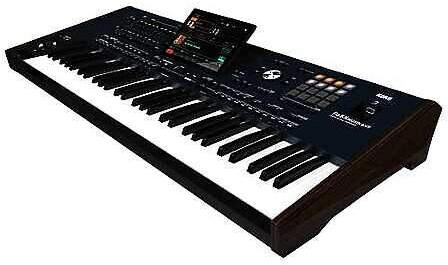
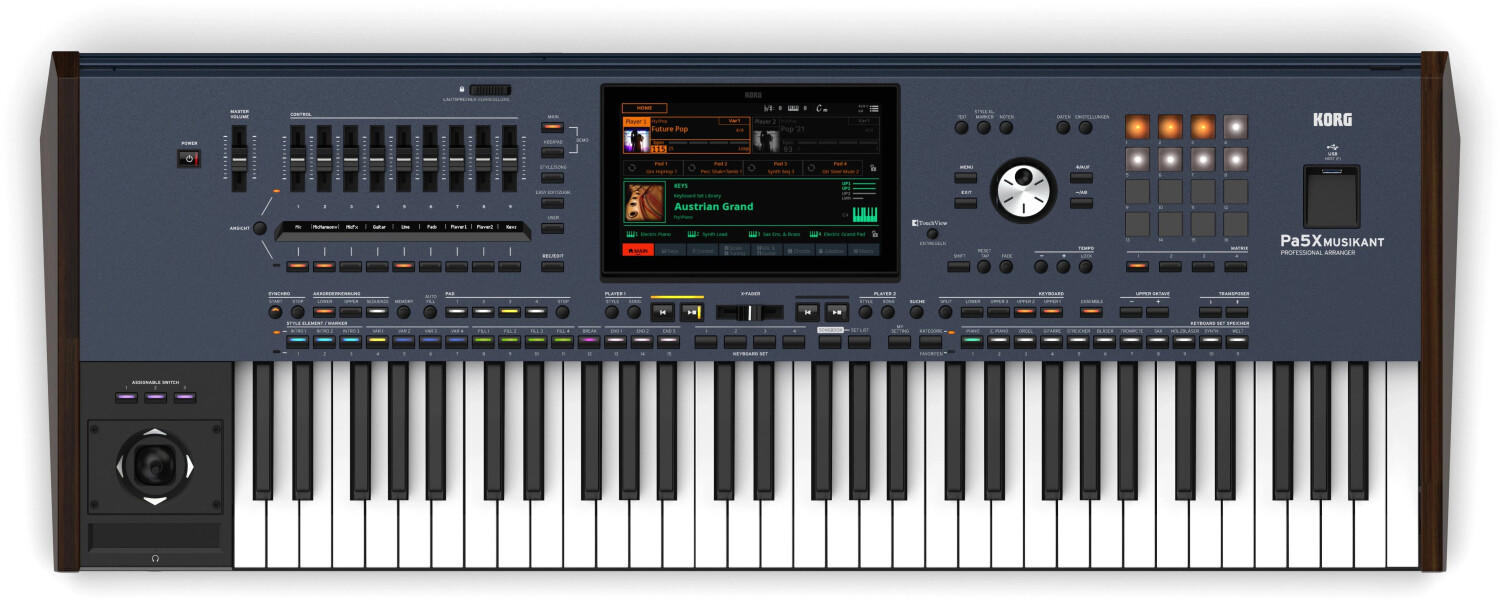

Size and dimensions
The size of the keyboard will determine its portability and whether it can fit into your available space. Additionally, the dimensions of the keys may impact your playing experience, especially if you have larger or smaller hands.
If you are looking for a compact electric keyboard, the Yamaha NP12 is a popular choice. With its slim and lightweight design, it is highly portable and convenient for traveling musicians. The keyboard measures 1,036mm in width, 105mm in height, and 259.5mm in depth, making it suitable for tight spaces as well.
For those seeking a more standard-sized keyboard, the Casio Privia PX-160 is an excellent option. It features full-size keys and a width of 1,322mm. The depth of 127mm and height of 284mm provide a comfortable playing experience. Additionally, the more advanced Yamaha P-515 boasts a sleek design, measuring 1,340mm in width, 145mm in height, and 320mm in depth. These dimensions make it suitable for both aspiring musicians and professionals alike.
Included accessories (stand, pedals, etc.)
Many electric keyboards come with additional accessories such as stands, pedals, and headphones. These accessories enhance the overall playing experience and convenience. For example, the Yamaha P-125 Digital Piano includes a sturdy L-85 stand that provides the perfect height and stability for comfortable playing. It also comes with a LP-1 pedal unit that offers progressive sustain, allowing the player to have more control over their musical expression. Additionally, the Alesis Melody 61 MKII is a keyboard that comes with an X-style keyboard stand and a padded adjustable piano bench to ensure proper posture and support during long practice sessions. Moreover, the Casio Privia PX-770 includes a three-pedal unit that replicates the functionality of a traditional piano, providing more versatility and complexity in playing styles. Ultimately, picking an electric keyboard with included accessories tailored to individual needs is crucial in ensuring a fulfilling and user-friendly musical journey.



Layering and splitting functions
Layering allows you to combine two sounds together, such as piano and strings, to create a rich and harmonious sound. Splitting allows you to divide the keyboard into different sections, each playing a different sound. This can be useful for playing different instruments simultaneously or for teaching purposes.
One example of a keyboard that offers impressive layering and splitting functions is the Yamaha DGX-660. It comes equipped with the ability to layer two different voices together, such as piano and strings, to create a more complex and textured sound. Additionally, it has a Split mode that allows you to divide the keyboard into two separate zones, each producing a different sound, perfect for playing accompaniment with one hand and lead with the other.
Another keyboard that provides excellent layering and splitting capabilities is the Casio Privia PX-870. It offers a unique feature called Duet mode, which splits the keyboard into two equal ranges, each with the same pitch and voice, enabling two players to sit side by side and play together. It also allows you to layer two different sounds together, such as a piano and an organ, to create your own customized combinations.
These are just a few examples of keyboards that come with advanced layering and splitting functions. It is recommended to consider your specific needs and preferences when selecting the right keyboard, in addition to these features.
Transpose function
This feature allows you to adjust the pitch of the keyboard without changing the actual key you're playing. This can be very useful if you need to accompany a singer or play along with other instruments that may be in a different key. Additionally, the Transpose function can help you play songs in different keys without the need to learn different fingering positions.
A good example of an electric keyboard that offers a Transpose function is the Yamaha P-125 Digital Piano. This versatile piano features a Transpose function that allows you to shift the pitch up or down in semitones, up to a maximum of +/- six semitones. Furthermore, the Casio Privia PX-S1000 Digital Piano also offers a Transpose function that allows you to transpose the piano up or down by as much as 99 semitones, providing a wide range of versatility when playing different songs and accompanying various musicians. Both of these keyboards are ideal for musicians who require the flexibility and convenience of a Transpose function.



Learning features (lessons, tutorials)
Many keyboards today come with built-in lessons and tutorials that can help beginners get started and even assist more advanced players in improving their skills. For those who are just starting out or wanting to learn to play, keyboards like the Yamaha PSR-E363 and Casio CTK-2550 are great options. Both keyboards provide step-by-step lessons and interactive tutorials, allowing users to practice at their own pace. They also come with a wide variety of sound options and accompaniment styles that make learning more enjoyable. For more advanced players looking to enhance their technique, the Yamaha DGX-660 and Casio Privia PX-160 offer features like graded hammer action and touch sensitivity which mimic the feel of a traditional piano, making them ideal for honing one's skills. These keyboards also have USB connectivity for easy recording and sharing of performances. Overall, it's essential to choose an electric keyboard with learning features that align with your skill level and goals.
MIDI compatibility
MIDI, which stands for Musical Instrument Digital Interface, allows for seamless integration between your keyboard and other devices such as computers, synthesizers, or sound modules. This enables you to take advantage of a vast library of virtual instruments and perform live, record, or compose music digitally.
If you're looking for a MIDI-compatible keyboard, a solid option is the Yamaha P-45 Digital Piano. It features a USB-to-host port, allowing easy connection to a range of devices. Another great choice is the Casio Privia PX-160 Digital Piano, which also offers MIDI capabilities via its USB port. For those seeking a more advanced option, the Korg KROME EX 88-Key Music Workstation provides both traditional MIDI ports and USB connectivity, granting flexibility for professional studio use.


Action type (hammer, semi-weighted, etc.)
Action refers to the keyboard's mechanism and how it feels when you press the keys. There are three main types of actions: hammer, semi-weighted, and synth.
Hammer-action keyboards are designed to mimic the feel of an acoustic piano, making them a great choice for piano players who want an authentic experience. Keyboards like the Yamaha P-45 and Kawai ES110 feature the Graded Hammer Standard (GHS) action, where the lower keys have a heavier touch while the higher keys are lighter. This realism allows for better control and dynamics while playing.
Semi-weighted keyboards, such as the Arturia KeyLab Essential 61 and Roland JUNO-DS76, combine the benefits of both hammer and synth actions. The keys have a gentle resistance without feeling too heavy or too light. This type of action appeals to musicians who want a balanced feel for both piano and synth playing.
Synth-action keyboards, like the Novation Launchkey 49 and Korg microKEY2-49, have lighter and springier keys, designed more for synthesizers and controllers. These keyboards offer a faster response for quick and agile playing styles commonly found in electronic music production.


Ultimately, when choosing the action type, it's important to consider your playing style and musical preferences.
Built-in song library
Many keyboards on the market today come equipped with a wide variety of pre-installed songs that can be played and enjoyed right away. These song libraries often include a mix of popular songs, classical compositions, and practice exercises to help users develop their skills.
One such keyboard that stands out in terms of the built-in song library is the Yamaha YDP-144. It offers a comprehensive selection of 50 classic piano songs, perfect for beginners and intermediate players looking to enhance their repertoire. Another excellent choice is the Casio PX-870, which features 60 built-in songs ranging from classical and jazz to pop hits, providing a diverse range of musical styles to explore. For those interested in a more advanced option, the Roland FP-90 stands out with its vast library of 384 songs, including a wide variety of genres and styles.

Bluetooth capabilities
This allows for wireless connectivity to other devices such as smartphones, tablets, or computers. One example of an electric keyboard with advanced Bluetooth capabilities is the Yamaha DGX-660. It offers seamless compatibility with Yamaha's Smart Pianist app, enabling access to a vast library of various songs, digital sheet music, and customizable settings. Another excellent option is the Casio PX-S1000, which not only boasts an appealing slim design but also utilizes Bluetooth connectivity to connect to the Chordana Play app. This app provides extensive learning features such as guided lessons and convenient MIDI file players to enhance your playing experience.
Sample library
The sample library determines the quality and variety of sounds that the keyboard can produce. Some keyboards come with built-in sample libraries that include a wide range of sampled instrument sounds such as pianos, strings, brass, and synthesizers. One example of a keyboard with an exceptional sample library is the Nord Stage 3. It features a versatile collection of high-quality sounds that are carefully sampled to replicate the intimate nuances of various instruments. Additionally, the Korg Kronos is another keyboard with an impressive sample library that includes acoustic and electric pianos, guitars, drums, and synthesizers. It offers a vast selection of realistic sounds to suit different musical genres and styles.


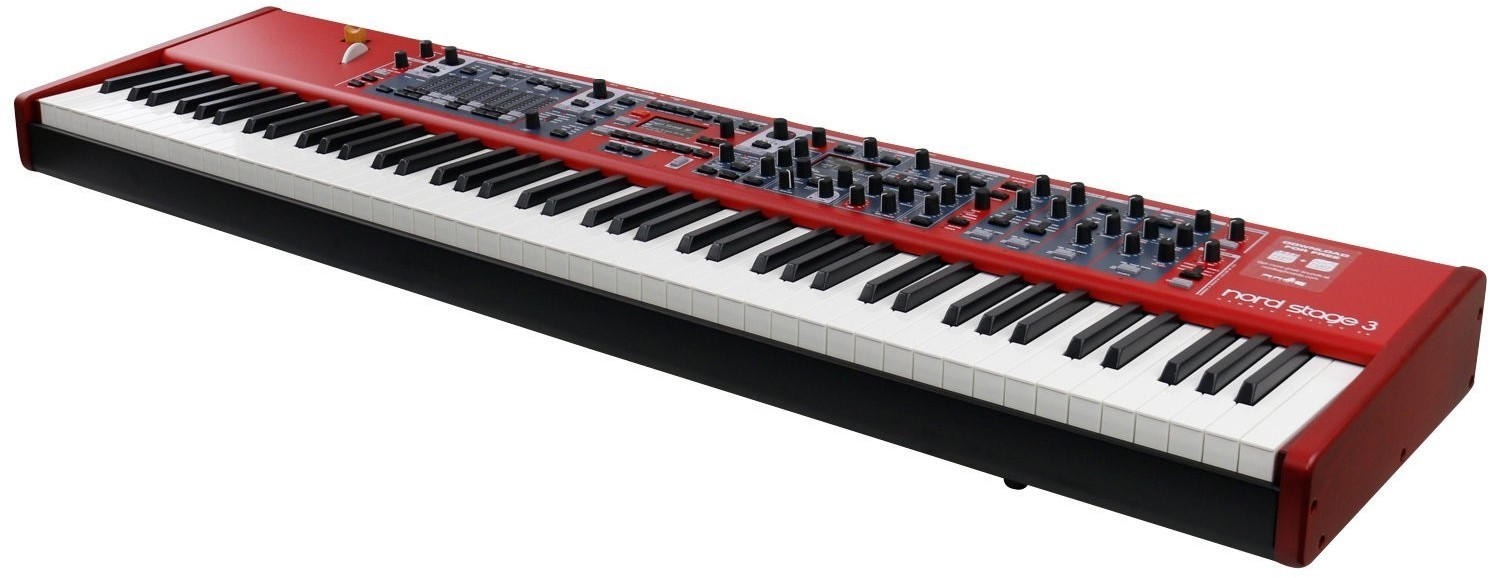
Pitch bend and modulation wheels
These wheels allow for dynamic control over the sound produced by the keyboard, enabling players to add expression and creativity to their playing.
There are various products on the market that offer pitch bend and modulation wheels. In the entry-level segment, the Yamaha PSR-E363 is a popular choice. It offers both pitch bend and modulation wheels, providing players with the ability to manipulate the pitch and tone of their notes. Moving up to the mid-range segment, the Roland Juno-DS61 is worth mentioning. Along with a range of high-quality sounds, it features both pitch bend and modulation wheels, allowing musicians to achieve nuanced control over their performances. For professional musicians, the Nord Stage 3 88 is a top-of-the-line option. Besides its exceptional sound quality, it includes pitch bend and modulation wheels, enabling musicians to create intricate and impactful musical expressions.


Expression pedals compatibility
Expression pedals allow you to control the volume or other effects of your keyboard by using your foot, giving you greater control and versatility during performances or recordings.
If you are looking for an electric keyboard that supports expression pedals, one great option is the Yamaha P-125 88-Key Digital Piano. It offers the ability to connect an expression pedal, such as the Yamaha FC4A Piano Style Sustain Pedal, allowing you to modulate the volume and expression of your playing. Another option to consider is the Casio Privia PX-160 Digital Piano, which also supports expression pedals like the Casio SP-3R Sustain Pedal.

These keyboards are part of the portable digital piano segment, which offers a wide range of features suitable for all levels of musicians, from beginners to professionals. Bear in mind that you should check the product specifications before purchasing to ensure the particular expression pedal you wish to use is compatible with the keyboard.
Built-in speakers volume
The volume of the speakers can significantly impact your playing experience, especially if you intend to use the keyboard for performances or practicing in a larger space.
There are some keyboards on the market that offer high-quality built-in speakers with impressive volume levels. For example, the Yamaha YDP-144 is known for its powerful speakers that provide excellent sound projection. With a speaker system featuring two 12cm woofers and two 4cm tweeters, the piano sound is reproduced with great clarity and depth. Another option is the Casio PX-770, which comes with an integrated speaker system and a 20-watt per channel amplifier. This ensures that the sound produced is loud and vibrant, perfect for performances in larger venues.


In contrast, there are also keyboards designed for more personal use or smaller spaces. These keyboards generally have built-in speakers with lower volume levels. For instance, the Roland GO:KEYS is an ideal choice for beginners or those who primarily play at home, as it offers a compact design and built-in speakers suitable for personal use. Similarly, the Korg B2 is a great option for practice sessions, with two upward-facing speakers that produce natural stereo sound but are designed for more intimate settings.

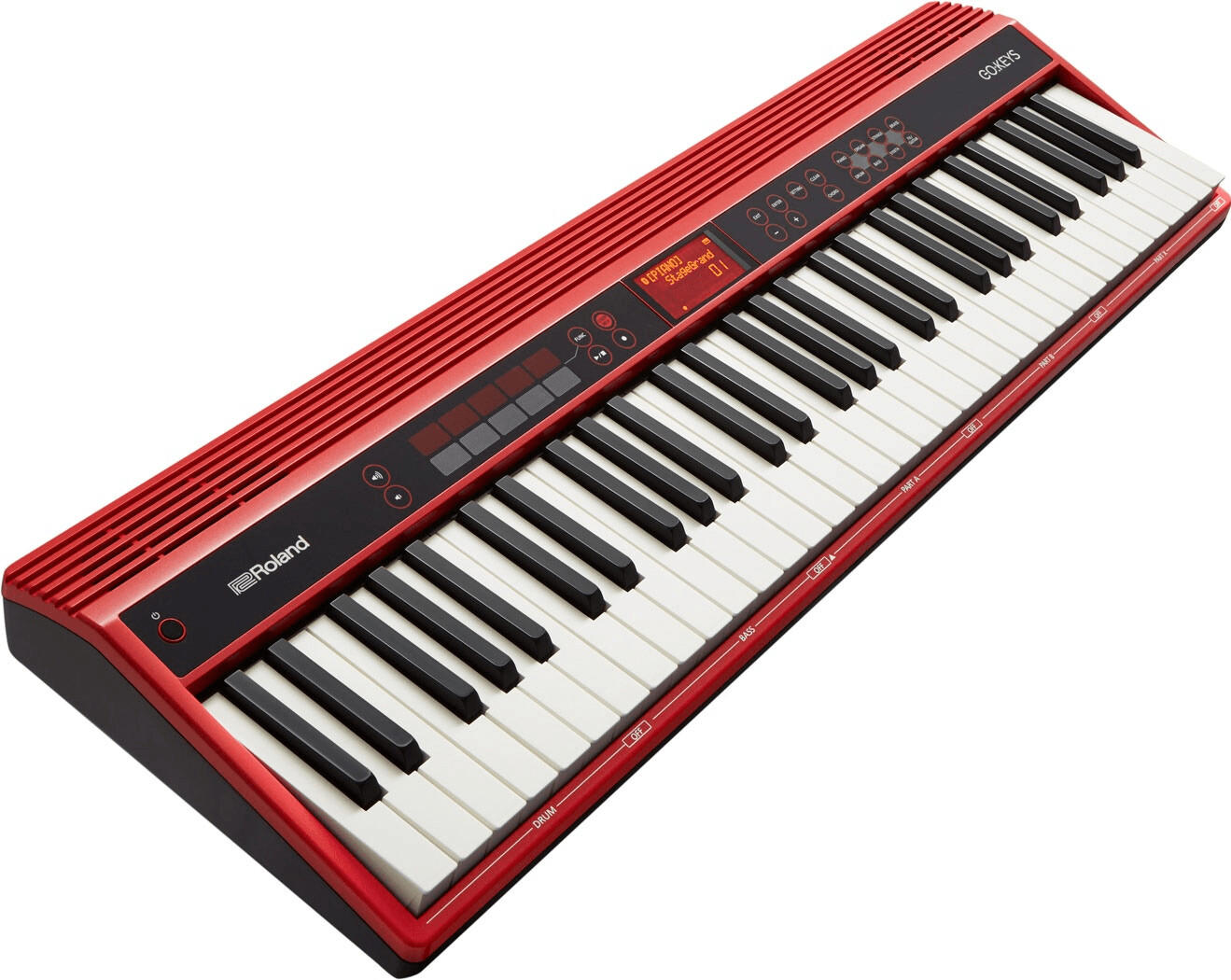

Port volume for headphones or general line.
The port volume refers to the maximum output level of sound that can be produced by the keyboard. This is particularly important for those who wish to use headphones or connect the keyboard to an external amplifier or speaker system.
Some electric keyboards on the market offer a wide range of port volume options, allowing you to adjust the output level to your specific needs. For example, the Yamaha DGX-660 offers a dedicated line output that provides a clear and crisp sound when connected to external speakers. It also has a headphone jack with adjustable volume control, allowing you to practice or perform in silence without disturbing others.
Another option to consider is the Roland FP-30, which features versatile connectivity options. It includes a headphone output with dedicated volume controls, allowing you to practice discreetly. Additionally, it offers both general and balanced line outputs, providing flexibility when connecting to a PA system or audio interface.
In summary, when choosing an electric keyboard, pay close attention to the port volume for headphones or general line. Look for keyboards that offer adjustable output levels, such as the Yamaha DGX-660 and Roland FP-30, to ensure that you can enjoy optimal sound quality both through headphones and when connecting to external audio devices.
Price
The market offers a wide range of options to fit different budgets. For those seeking an entry-level keyboard at an affordable price, the Yamaha PSR-E363 is a fantastic choice. Packed with 574 instrument voices, it offers great value for its price. Alternatively, the Casio CTK-3500 provides 400 tones and 100 rhythms, making it another cost-effective option for beginners. Moving up the price ladder, the Yamaha P-125 stands out in the mid-range segment. With graded hammer standard keys and Yamaha's high-quality sound engine, it offers realistic piano playing experience. In the higher price range, professional musicians might find the Roland RD-2000 appealing. It boasts an extensive collection of high-res sounds, authentic piano action, and advanced features such as eight assignable zones and multiple audio outputs.
Variety of brands
Different brands offer their unique features, quality, and reputation. Among the top brands available, Yamaha, Casio, and Korg are widely recognized for their outstanding electric keyboards.
Yamaha keyboards are known for their exceptional sound quality, versatility, and durability. They offer a wide range of Electric Keyboards suitable for all levels of playing, including the Yamaha PSR-EW410, which comes with 76 touch-sensitive keys, a vast library of instrument voices, and 232 accompaniment styles.
Casio, on the other hand, is well-regarded for their affordability and user-friendly features. Their keyboards such as the Casio CTK-2550 provide excellent value for beginners with 61 touch-sensitive keys and a comprehensive keyboard lesson function.
Korg keyboards are esteemed for their advanced sound engine and professional features. The Korg KROSS2-61 is a noteworthy example, offering 61 semi-weighted keys, a wide selection of sound programs, and a built-in audio/MIDI recorder.
While each brand offers a range of options, it is important to thoroughly research, compare the specifications, and understand your specific needs to find the best electric keyboard that suits your requirements.